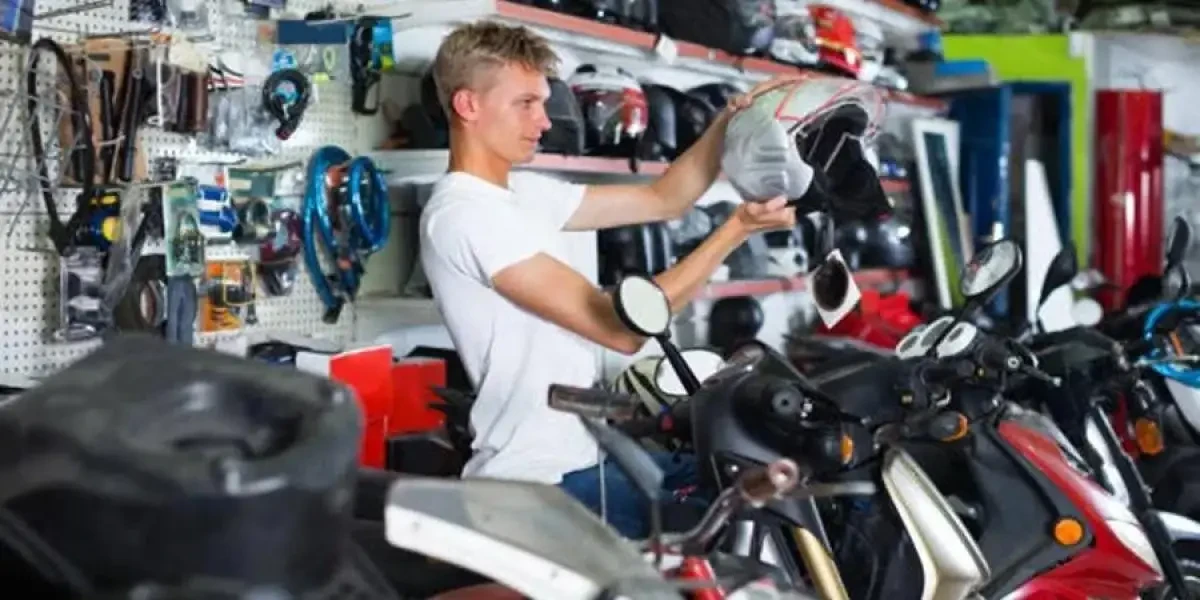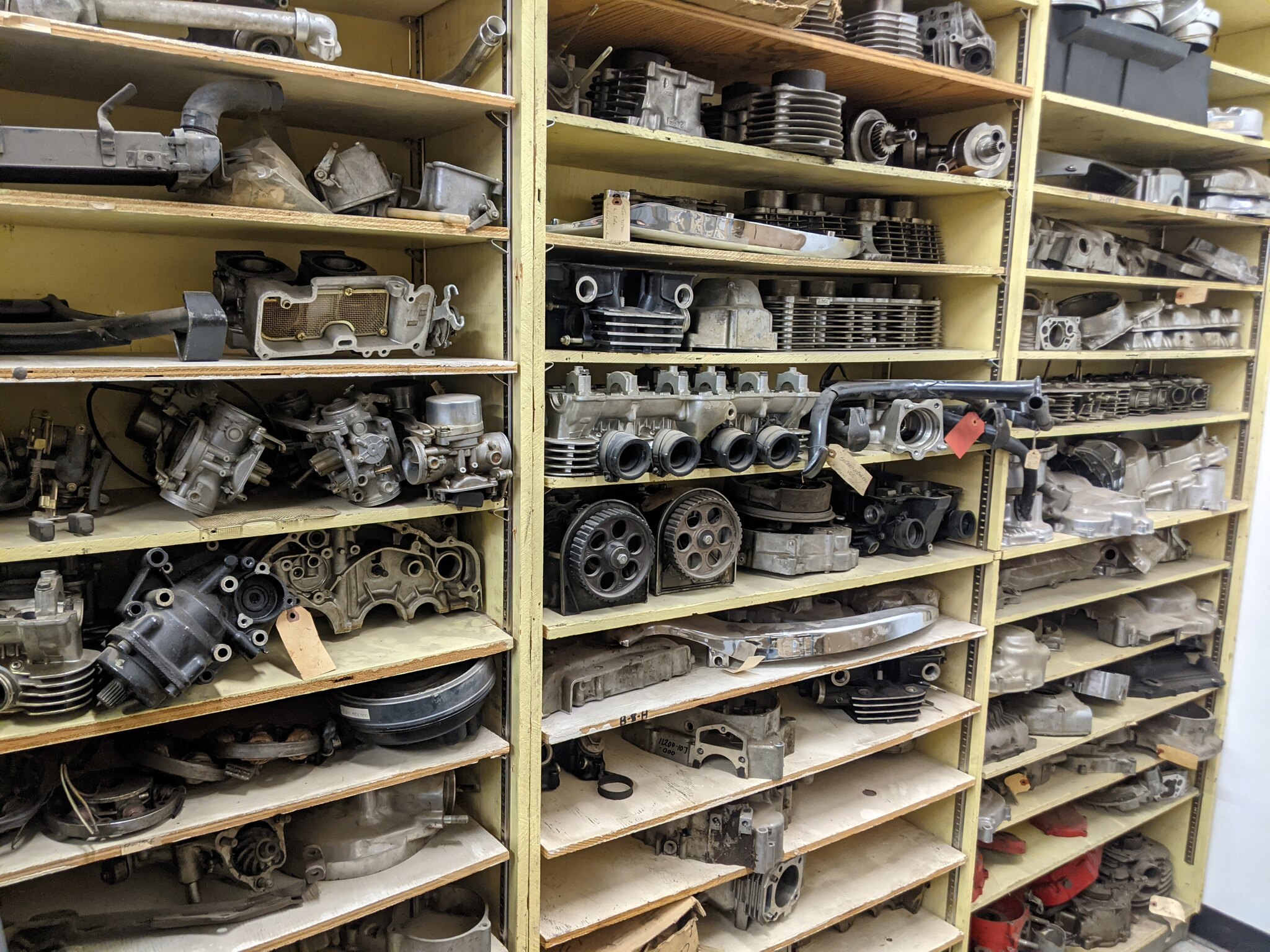Your Best Motorbike Shop for High Quality Parts and Accessories
Your Best Motorbike Shop for High Quality Parts and Accessories
Blog Article
Recognizing the Vital Parts of a Bike: A Comprehensive Overview for Lovers
For bike lovers aiming to elevate their riding experience and ensure their bikes run efficiently, recognizing the essential components of a motorcycle is paramount. Each aspect, from the engine's intricate workings to the crucial duty of the stopping devices, not just impacts performance however likewise safety and comfort. This overview will go through the fundamental parts that every motorcyclist need to recognize with, allowing informed selections in both maintenance and possible upgrades. As we begin this exploration, one must ask: exactly how does each component engage to produce the smooth ride every fanatic seeks?
Engine Components

The camshaft plays an essential duty in regulating the timing of the engine's valves, guaranteeing the specific opening and closing essential for effective fuel and air consumption, along with exhaust expulsion. This timing is vital to keeping ideal engine efficiency and performance. Additionally, the carburetor or gas shot system, relying on the motorbike model, is in charge of blending air with gas in the correct proportion for combustion.
The cooling system, either air or liquid-based, functions to keep the engine's temperature within functional restrictions, avoiding getting too hot and ensuring longevity - motorcycle parts nz. Each element, diligently developed and incorporated, contributes to the smooth operation of the engine, specifying the motorbike's power outcome and overall performance
Transmission System
Integral to the motorbike's capability, the transmission system makes sure reliable power transfer from the engine to the wheels. This system comprises a number of critical parts, including the clutch, gearbox, and final drive, each playing an essential function in converting the engine's power into motion. The clutch, usually run by a hand lever, offers to disengage the engine and engage from the transmission, permitting smooth equipment modifications and controlled velocity.
The gearbox, commonly referred to as the transmission correct, has a collection of gears that cyclists can manually move via to change the bike's speed and torque outcome. These equipments are organized in a series that makes it possible for the motorcycle to speed up smoothly and maintain optimal engine performance throughout different rates. Most motorbikes use a consecutive transmission, requiring the motorcyclist to change equipments in a fixed order.
Braking Systems
While comprehending the transmission system is essential to harnessing a bike's power, equally crucial is the capability to manage and quit that power efficiently, which is where braking systems come right into play. Brakes are important for safety and performance, offering the rider with the essential control to browse various surfaces and problems. Normally, bikes include 2 types of braking systems: disc brakes and drum brakes.
Disc brakes are a lot more prevalent in modern bikes due to their remarkable performance. This system offers better heat dissipation, constant performance, and improved stopping power, especially in wet problems.
On the other hand, drum brakes, though less typical, are still found in some motorbikes. They work by pressing brake footwear versus the internal surface of a drum attached to the wheel. While typically much less reliable in heat dissipation and quiting power, drum brakes are less complex and extra cost-efficient.
Understanding these braking systems' nuances enables motorcyclists to preserve their bikes correctly and appreciate the design that makes certain safe and effective quiting.
Suspension and Steering
Suspension and steering systems are important elements that substantially influence a bike's handling and experience convenience. The shock absorber, containing forks at the front and shock absorbers at the rear, absorbs road abnormalities, enhancing stability and control. Front forks, typically telescopic or inverted, compress and rebound to reduce effects, while back shock absorbers preserve tire contact with the road, important for grip and security.
Steering, centered around the handlebars, attaches the cyclist to the motorbike's directional control. The guiding head bearings make sure smooth operation, allowing precise maneuverability. Appropriate placement and upkeep of these bearings are critical for foreseeable guiding reaction and decreasing motorcyclist fatigue.
The suspension's adjustability is one more crucial aspect; preload, damping, and rebound settings enable personalization to suit numerous riding styles and problems. This flexibility is important for optimizing efficiency, whether navigating metropolitan roads or dealing with sturdy tracks. Innovations like digital shock absorber supply real-time modifications, enhancing experience quality across diverse terrains.

Electrical Equipments
After ensuring a smooth and controlled ride with reliable suspension and steering systems, focus transforms to the electrical systems, a pivotal aspect of contemporary bikes. These systems play an important role not only in starting the engine however also Bonuses in powering various elements that improve the capability and safety of the motorbike.
At the heart of a bike's electric system is the battery, which shops electric energy essential for starting the engine and powering supporting systems - mx parts nz. The generator or generator, combined with the rectifier-regulator, makes certain the battery remains charged while the bike functions, converting mechanical power right into electrical energy and maintaining voltage degrees
The ignition system, one more critical part, is responsible for stiring up the air-fuel mixture in the engine's cylinders. Modern motorbikes frequently make use of an electronic ignition system, supplying greater efficiency and integrity compared to traditional systems.
Illumination systems, including headlights, tail lights, and indications, are also important, ensuring presence and security for the cyclist. Added electronic components such as sensors, control units, and presents add to innovative attributes like fuel shot monitoring, anti-lock stopping systems (ABDOMINAL MUSCLE), and electronic control panels, better boosting the riding experience.
Final Thought
An extensive comprehension of a motorcycle's crucial components, including the engine, transmission system, stopping mechanisms, suspension, guiding, and electric systems, is indispensable for lovers aiming to optimize convenience, performance, and security. Proficiency of these elements permits for informed decisions pertaining to maintenance and upgrades, inevitably boosting the riding experience. By incorporating this understanding, bikers can ensure their motorbikes run at peak performance and dependability, thereby taking full advantage of second hand motorcycle gear both pleasure and longevity of their automobiles.
For motorbike lovers looking to elevate their riding experience and guarantee their bikes run efficiently, recognizing the important elements of a motorcycle is paramount.Indispensable to the bike's performance, the transmission system guarantees effective power transfer from the engine to the wheels.While comprehending the transmission system is key to utilizing a motorcycle's power, similarly vital is the capability to look at these guys regulate and stop that power effectively, which is where braking mechanisms come right into play. Usually, motorcycles include two types of stopping systems: disc brakes and drum brakes.
A thorough understanding of a bike's vital parts, including the engine, transmission system, stopping mechanisms, suspension, steering, and electric systems, is indispensable for lovers intending to enhance efficiency, safety, and comfort.
Report this page